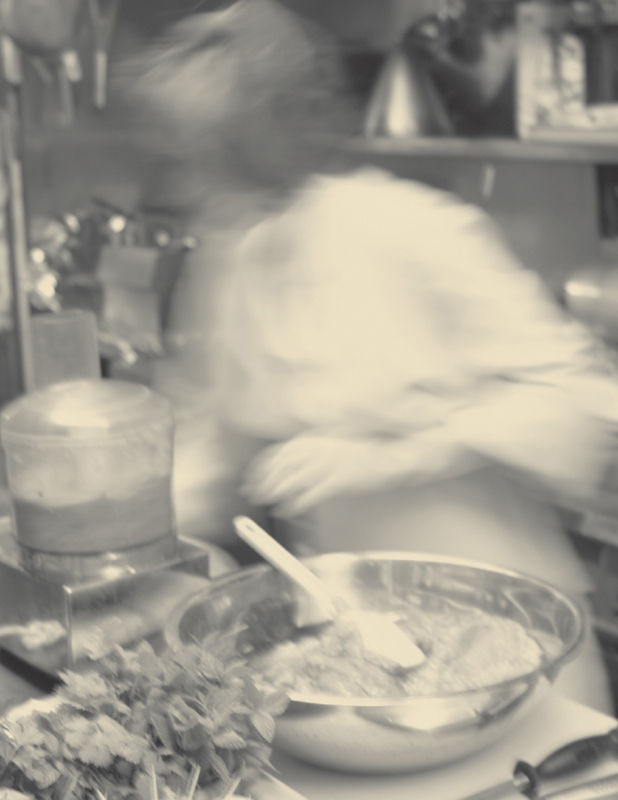
INTRODUCTION A s a young and inexperienced wife starting married life full of expectations, I was very frustrated by not being able to find an indispensable and practical Lebanese recipe book. Like most mothers, mine too had handed down her special recipes, but because I had a busy schedule, and because some of the required ingredients were not widely available at the time, these recipes were largely impractical for daily meals. It was at this point that I made a vow to compile, at my earliest convenience, a cookery book that would salvage and enhance these handed-down recipes and generally ease the pressure involved in putting a meal together, be it cooking healthily for a family, or just for creating simple dishes that even a newcomer to Lebanese cuisine could manage with effective results. Having set out that task for myself, I then turned my attention to recreating almost all of the dishes in this book simply by remembering the flavours and tastes required to achieve the desired result. Dedication is always the key to success and luckily it happened within this process; as a housewife, cooking for my family became a procedure and a pleasure. Opening a Lebanese restaurant was the event in my life that gave me the assurance that energy combined with ability and a natural approach to good taste, as well as good presentation, was the key to professional success in cooking.
This is particularly the case with Lebanese cooking, as it is probably one of the most decorative, colourful and fresh ingredient-based cuisines. It is simple yet very elegant in its presentation. All these qualities are represented at different times of the year, as each season is rich with its abundance of fruit and vegetables although its true to say that these days, one can get almost all the ingredients required at any time of the year. Having become involved in running the restaurant, the strict schedule and long hours that this role necessitated meant that I couldnt fulfil the mission I had set out to accomplish putting together a comprehensive book of Lebanese recipes. But it was never far from my thoughts. Indeed, being in direct contact with my restaurant clients was a constant reminder in itself, because they were interested in the food and enquired often about cookery lessons or a book that they could follow.
I made endless promises to come up with something useful. Sometimes I even wrote down a few lines of a recipe that a client had expressed an interest in cooking for a dinner party or some other occasion, and I even offered ideas on how to achieve this easily at home. But I never looked on it as a chore; I enjoyed doing it immensely. And so at long last, and after several years of serious thinking about what this book should contain, I hope the end result will meet everyones expectations and that the wait has been worth it. For me it is fulfilling that early vow, clarifying my experiences and those of previous generations all those pleasurable moments of achievement, emphasis on confidence in my skills, and a passion for food in general and Lebanese cuisine in particular. I hope this book will erase any mystery surrounding Lebanese cooking and that the simple techniques will allow you to prepare these popular dishes.
More so than ever, modern equipment such as food processors, grinders, blenders and liquidisers make food preparation simple, and add a new dimension to the cuisine. Added to that is the availability and abundance of ingredients in todays supermarkets and specialist stores. There are some people who deserve a special mention here as they contributed immensely to the production of this book, whether it was through moral support or assurance, or just by keeping check on my wellbeing throughout the process of running the show, sometimes under the most difficult conditions. My dedications are to three women, successful in their own right, and had it not been for Lebanese food we would never have met. First is Lorna Strauss, an enthusiastic restaurant client and friend. I remember the first time I met her.
It was in the kitchen at the restaurant; she introduced herself to me by inquiring about private lessons. Being too busy to take her seriously then, I thought at least the book might help her. The second has been another pillar of strength to me, and was also originally a client: Janan Harb. I remember coming up the stairs in the restaurant on one occasion I could hear a woman enquiring about the chef. She insisted the chef must be a woman as, according to her, she could feel and taste the feminine touch throughout her meal. She wanted to meet me, which was not only a pleasure but also the start of a great friendship.
The third is Anne Bishop. She, too, was originally a client, but more than that she gave up her weekends to sit with me while we compiled the recipes that now make up this book. Having realised that I was so busy I would probably never finish this book on my own, she set herself the task of chaining me to a schedule on Sundays to do something about it. We had great fun and we achieved a lot. To her, and to my other two friends, I am truly grateful. I hope you enjoy this book.
My aim in compiling it has been to enhance the knowledge of the already informed, enlighten the unsure and simplify the approach towards this for one reason or another largely undiscovered way of eating. In Simply Lebanese I have tried to remove some obstacles, hoping that the message gets through and helps to popularise this style of cooking.
THE IMPORTANCE OF MEZZE IN LEBANESE CUISINE
L ebanese
mezze is Lebanese cuisine; it encapsulates this whole style of cooking in a more convincing way than any other kind of
mezze. This is because the Lebanese lifestyle is very much reflected in their way of eating
mezze: the Lebanese people relax and take their time eating their
mezze. For example, they might linger at breakfast until lunchtime, lunch could spread into afternoon tea, and then dinnertime arrives! The


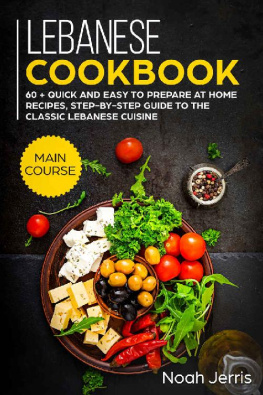
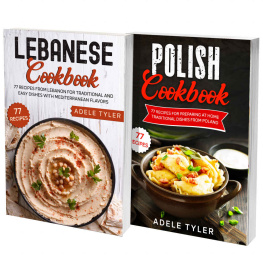
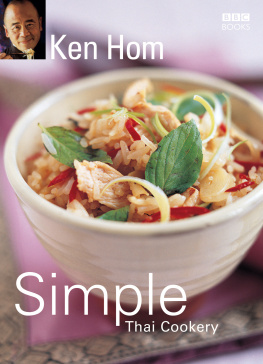
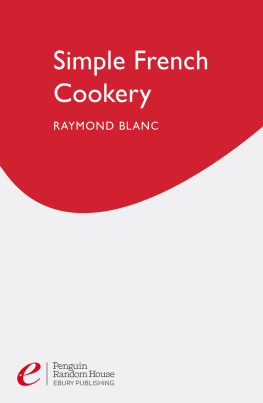

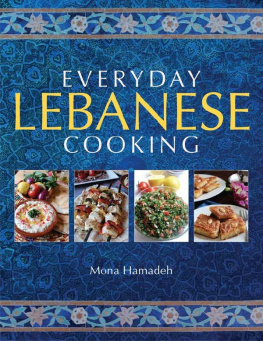
 Photographs by Simon Smith
Photographs by Simon Smith 
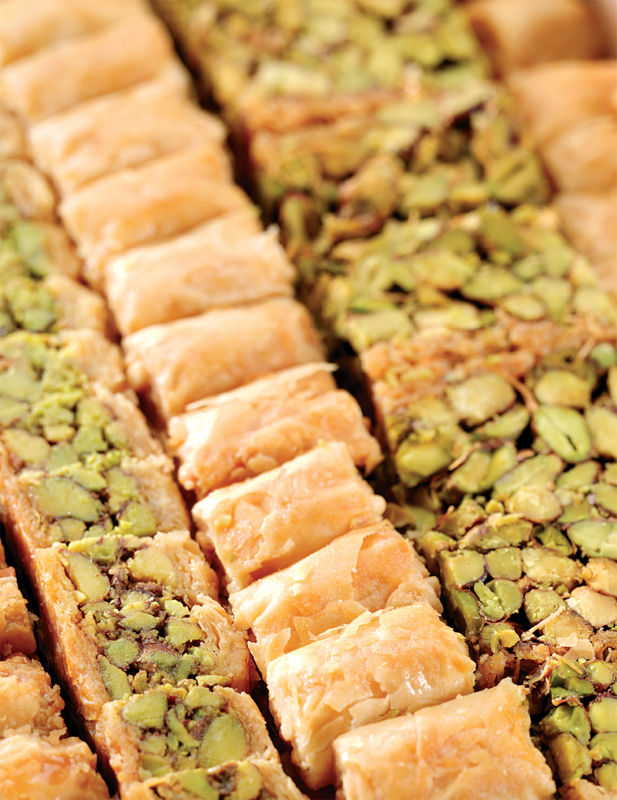 Dedicated to my husbandSimply LebanesePublished by Garnet Publishing Limited 8 Southern Court, South Street Reading RG1 4QS, UK www.garnetpublishing.co.uk www.twitter.com/Garnetpub www.facebook.com/Garnetpub garnetpub.wordpress.com Copyright Text Inaam Atalla 2004 Photographs Simon Smith 2004 The right of Inaam Atalla to be identified as author of this work has been asserted by her in accordance with the Copyright, Designs and Patents Act 1988. All rights reserved. No part of this book may be reproduced in any form or by any electronic or mechanical means, including information storage and retrieval systems, without permission in writing from the publisher, except by a reviewer who may quote brief passages in a review. First edition 2004 Reprinted 2006 First Paperback edition 2012 ISBN: 978-1-85964-343-3 British Library Cataloguing-in-Publication Data. A catalogue record for this book is available from the British Library. CreditsEditor Emma Hawker Design and Art Direction David Rose Production Typesetting: Samantha Barden Photography Simon Smith Toby Scott (Assistant) Printed and bound in Lebanon by International Press: While every care has been taken in the preparation of this book, neither the author nor the publishers can accept any liability for any consequence arising from the use of information contained herein.
Dedicated to my husbandSimply LebanesePublished by Garnet Publishing Limited 8 Southern Court, South Street Reading RG1 4QS, UK www.garnetpublishing.co.uk www.twitter.com/Garnetpub www.facebook.com/Garnetpub garnetpub.wordpress.com Copyright Text Inaam Atalla 2004 Photographs Simon Smith 2004 The right of Inaam Atalla to be identified as author of this work has been asserted by her in accordance with the Copyright, Designs and Patents Act 1988. All rights reserved. No part of this book may be reproduced in any form or by any electronic or mechanical means, including information storage and retrieval systems, without permission in writing from the publisher, except by a reviewer who may quote brief passages in a review. First edition 2004 Reprinted 2006 First Paperback edition 2012 ISBN: 978-1-85964-343-3 British Library Cataloguing-in-Publication Data. A catalogue record for this book is available from the British Library. CreditsEditor Emma Hawker Design and Art Direction David Rose Production Typesetting: Samantha Barden Photography Simon Smith Toby Scott (Assistant) Printed and bound in Lebanon by International Press: While every care has been taken in the preparation of this book, neither the author nor the publishers can accept any liability for any consequence arising from the use of information contained herein. INTRODUCTION A s a young and inexperienced wife starting married life full of expectations, I was very frustrated by not being able to find an indispensable and practical Lebanese recipe book. Like most mothers, mine too had handed down her special recipes, but because I had a busy schedule, and because some of the required ingredients were not widely available at the time, these recipes were largely impractical for daily meals. It was at this point that I made a vow to compile, at my earliest convenience, a cookery book that would salvage and enhance these handed-down recipes and generally ease the pressure involved in putting a meal together, be it cooking healthily for a family, or just for creating simple dishes that even a newcomer to Lebanese cuisine could manage with effective results. Having set out that task for myself, I then turned my attention to recreating almost all of the dishes in this book simply by remembering the flavours and tastes required to achieve the desired result. Dedication is always the key to success and luckily it happened within this process; as a housewife, cooking for my family became a procedure and a pleasure. Opening a Lebanese restaurant was the event in my life that gave me the assurance that energy combined with ability and a natural approach to good taste, as well as good presentation, was the key to professional success in cooking.
INTRODUCTION A s a young and inexperienced wife starting married life full of expectations, I was very frustrated by not being able to find an indispensable and practical Lebanese recipe book. Like most mothers, mine too had handed down her special recipes, but because I had a busy schedule, and because some of the required ingredients were not widely available at the time, these recipes were largely impractical for daily meals. It was at this point that I made a vow to compile, at my earliest convenience, a cookery book that would salvage and enhance these handed-down recipes and generally ease the pressure involved in putting a meal together, be it cooking healthily for a family, or just for creating simple dishes that even a newcomer to Lebanese cuisine could manage with effective results. Having set out that task for myself, I then turned my attention to recreating almost all of the dishes in this book simply by remembering the flavours and tastes required to achieve the desired result. Dedication is always the key to success and luckily it happened within this process; as a housewife, cooking for my family became a procedure and a pleasure. Opening a Lebanese restaurant was the event in my life that gave me the assurance that energy combined with ability and a natural approach to good taste, as well as good presentation, was the key to professional success in cooking.